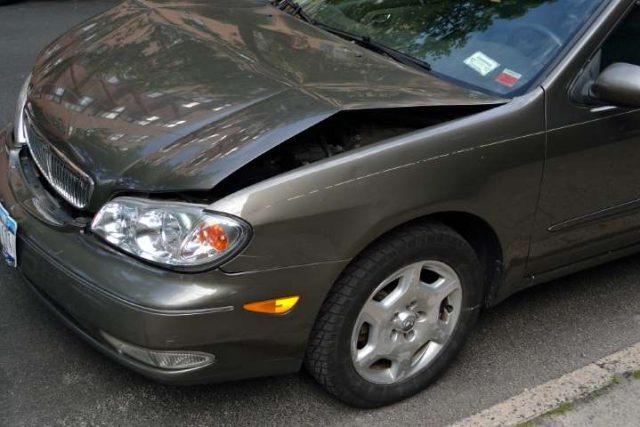
Everything is bigger in Texas, including the state. With 268,597 square miles in its borders, Texas is second only to Alaska when it comes to size. With all of the acreage out there, you can expect miles of highways and intersections, and you’re not going to be disappointed.
Unfortunately, this also means Texas is home to dangerous roads and intersections. Ensuring safety by avoiding known dangerous roads is simply common sense. Unfortunately, this isn’t always possible. While staying alert and following all traffic laws can help mitigate your risk of an accident, car wrecks still occur.
So, do you know your legal rights if you’re involved in an accident at an intersection or on a dangerous road?
Intersections and Roads You May Want to Avoid
The Texas Department of Transportation (TXDOT) has a wealth of information about the state’s roads and intersections on its website. Houston and San Antonio have more dangerous intersections than other cities like Dallas or Austin, but this doesn’t mean letting your guard down. Statistics are similar when it comes to dangerous roads—however, dangerous roads and intersections are not limited to city limits.
Remember, Texas is the second largest state in America, which means it has plenty of country roads and intersections you may want to try to avoid. So, what makes some roads and intersections more dangerous than others? A few factors determine how risky they are. This includes the number of bicycles and pedestrians, the volume of traffic, and the design.
For example, a four-way stop with lots of pedestrian and vehicle traffic is often more dangerous than one infrequently traveled.
Why Accidents Happen at Intersections
Accidents at intersections can involve one or more vehicles, bicycles, and pedestrians. No two accidents are the same, but there are some common causes.
The National Highway Traffic Safety Administration (NHTSA) has listed the results from its study based on 2.1 million accidents. The majority of intersection accidents are caused by drivers not paying attention. Illegal turns are another reason car accidents occur.
A surprising finding is that 78.6% of accidents happen when the weather is sunny. Bad weather can certainly cause a car accident, but just not as frequently as you may think it does.
What Makes a Road Dangerous
The best road for driving is straight, flat, and clear of obstacles—think of a road like a runway at an airport. While you can find plenty of roads in Texas fitting this description, you can also find plenty out there that you may consider riskier to drive on.
What makes one road more dangerous than others? A lack of street lighting, steep hills, and tight curves are a few factors, but this doesn’t mean you should skip a trip to Texas’s Hill Country. The area is infamous for its hilly roads, lack of lights, and wandering wildlife like deer, you just need to pay constant attention to what’s going on around you.
Your Rights After An Accident in an Intersection
Texas is a right-of-way state, meaning the driver with the right-of-way is typically the no-fault driver when accidents occur at an intersection. This law also applies to cyclists and pedestrians, though emergency vehicles are usually exempt, though an exception may be made if the emergency vehicle is not using its lights and/or sirens.
The first driver to reach the stop sign is the next one to go, regardless of if they’re going straight or turning. The law is the same for two and four-way stops.
If an accident occurs, the driver who runs the stop sign or goes before their turn is typically the one at fault. Proving who is at fault at stop signs can be complicated. In some cases, shared responsibility may apply. Texas’s shared responsibility law places the blame on both drivers, where sometimes it’s 50-50 blame, but this can vary.
The law is clearer at intersections with traffic signals. Drivers come to a complete stop when the light is red or flashing. A green light signals that it’s time to go, but you still want to look in all directions before proceeding. Some drivers enjoy tempting fate and will barrel through a red light. If an accident occurs, whoever ran the red light is at fault.
Some intersections have a dedicated turn lane where you’re only allowed to turn left or right, depending on the arrow’s direction. Failing to do so can make you responsible for the accident. When it comes to yellow lights, always proceed with caution. Drivers going straight typically have the right-of-way.
Your Rights After An Accident on a Dangerous Road
Texas laws are the same regardless of whether the car accident occurs on the freeway or a two-lane highway.
If you hit the back of someone’s vehicle, you are the driver receiving the ticket for failing to maintain a safe distance. Paying attention to other drivers’ speed is crucial in preventing accidents on the road. Keeping an eye on their brake lights can warn you that they’re slowing down.
Head-on collisions are frightening and can be devastating for everyone involved. This may also be a situation where you want to contact an accident attorney; your rights can be a little confusing, especially as the authorities are sorting out the details. A factor that helps determine which driver is to blame for the car wreck is speed, and blame may be automatically assigned to the driver going above the posted speed limit.
Road conditions can be another determining factor. Sometimes, poor road conditions can cause a wreck to be called a no-fault accident. This is when the shared responsibility law may come into play.
When Should You Contact an Attorney
The best advice is to always contact an attorney when you’re involved in a car accident. You may be the driver receiving the traffic ticket or citation, but it doesn’t mean you shouldn’t seek legal advice when you’re involved in one.
Car collisions are more frequent on dangerous roads and intersections but can occur anywhere, so try to remain vigilant and know what to do in the event you’re involved in one.





